Content
- 1 Composition and release form
- 2 Mechanism of action
- 3 What weeds does it help with?
- 4 Advantages and disadvantages
- 5 Preparation of working solution
- 6 Instructions for use of the drug Grader against weeds
- 7 Compatibility with other tools
- 8 Safety precautions and toxicity
- 9 Analogues
- 10 Conclusion
- 11 Reviews from summer residents about the herbicide Grader
Herbicide Grader is a continuous action systemic preparation. It is acceptable to use it on sunflower and rapeseed crops that are resistant to imidazolinones, as well as on non-agricultural areas. This drug helps to quickly eradicate all types of weeds, as well as trees and shrubs. In order for its use to be as effective as possible, you need to take into account the manufacturer’s recommendations.
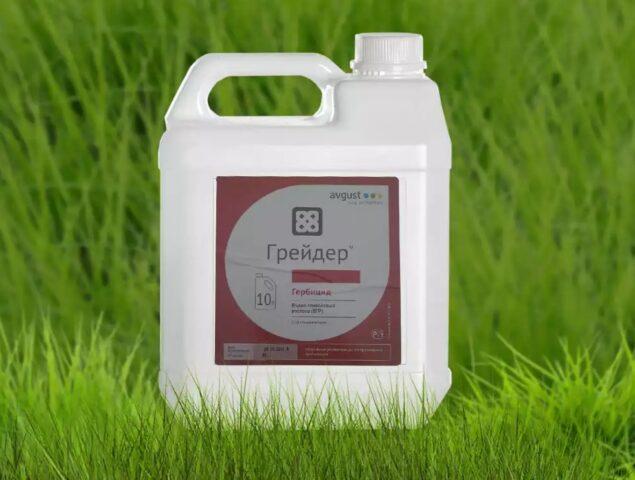
The grader suppresses the growth of grassy and woody weeds regardless of their development phase
The grader suppresses the growth of grassy and woody weeds regardless of their development phase
Composition and release form
A grader is a concentrated solution. The herbicide is sold in 1 liter bottles, as well as 5.10 liter canisters. The active component of the drug is imazapyr with a concentration of 250 g per liter.
Mechanism of action
After spraying, the herbicide is quickly absorbed by the leaves of the weed and spreads to all parts of the plant, including the root system.Imazapyr inhibits the synthesis of the enzyme acetohydroxy acid, which leads to DNA damage. The active substance moves through the phloem, xylem and concentrates at growth points, stopping the process of cell division.
Herbicide Grader also exhibits soil activity, so it is also effective against young weeds. The destructive effect of the drug on non-agricultural lands lasts 3-5 years, depending on the composition of the soil.
The drug begins to work two hours after treatment. After 24 hours, it stops the growth of weeds. After 7-14 days, clear signs of the herbicide's action appear.
Among them:
- chlorosis;
- yellowing of leaves;
- dejected look.
Completely grassy weeds die a month after treatment with the Grader. And tree and shrub growth - after 8-12 weeks.
What weeds does it help with?
The geyder is recommended for the destruction of all types of dicotyledonous and cereal weeds, including the most malicious. The drug also causes the death of shrubs and trees, such as alder, birch, pine, spruce, aspen, willow and others.
Due to its high activity, it is not recommended to use the product on personal plots and agricultural lands, except for sunflower and rasa crops that are resistant to the action of the active component.
Advantages and disadvantages
The drug has many advantages, which sets it apart from other drugs of similar action. But it also has certain disadvantages that need to be taken into account.
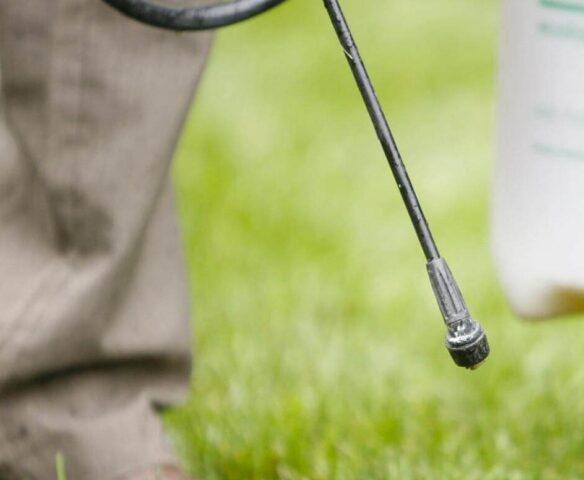
The active component of the Grader does not migrate in the soil
The active component of the Grader does not migrate in the soil
Pros:
- wide spectrum of action;
- long protective period;
- rain resistance;
- effective regardless of the phase of weed development;
- remains active in the soil;
- low toxicity;
- has no pungent odor;
- does not cause resistance;
- economical consumption.
Flaws:
- is not selective;
- requires compliance with precautionary measures;
- impossibility of use on personal plots;
- restrictions on crop rotation.
Preparation of working solution
According to the instructions for use, the grader chemical must be diluted with water before treatment. The working solution must be prepared directly in the sprayer tank before use. When diluted, the drug remains active for 12 hours. Remains of the product after completion of processing must be disposed of.
Step-by-step instruction:
- Fill the sprayer tank with 1/3 of the required volume of water.
- Shake the container with the herbicide.
- Add the required amount of herbicide.
- Mix until smooth.
- Pour in the remaining water.
- Stir again.
Instructions for use of the drug Grader against weeds
It is necessary to apply herbicide in the morning or evening. This allows you to avoid evaporation of the product and achieve its maximum absorption by weed leaves. It is important to take into account wind speed. To avoid dispersion, it should be 4 m/sec.
After treatment, manual and mechanized work on the site can be carried out no earlier than two weeks later.
Features of using the Grader:
- Non-agricultural land.You can spray weeds, shrubs, and trees with herbicide throughout the growing season. The consumption rate of the working solution is 100-300 l/ha, depending on the degree of weediness. One treatment is allowed per season. The waiting period before picking berries and mushrooms is 30 days.
- Crops of sunflower, spring and winter rape. Treatment is recommended to be carried out at the stage of early weed growth and 4-5 leaves of the main crop. The recommended flow rate of working fluid is 50-300 l/ha. The waiting period is 60 days, and mechanized work can be carried out no earlier than after 14 days.
When using the Grader on crops, crop rotation restrictions must be observed. In the year of use, it is recommended to sow winter rapeseed and wheat. Next season you can plant legumes, spring and winter wheat, barley, and rye. After two years, plant oats and sunflowers. And after three years, it is possible to sow any crops.
Compatibility with other tools
The grader can be combined in one tank mix with other herbicides. This allows you to reduce the consumption rate and expand the range of action.
Recommended combinations:
- On non-agricultural lands. The grader can be used in conjunction with Tornado or Magnum.
- On sunflower and rapeseed crops. It is permissible to use a tank mixture: Grader, Paradox, Adju surfactant.
When using drugs simultaneously, it is necessary to conduct a test first. To do this, mix herbicides in small quantities. If this results in no precipitation, they can be used together.
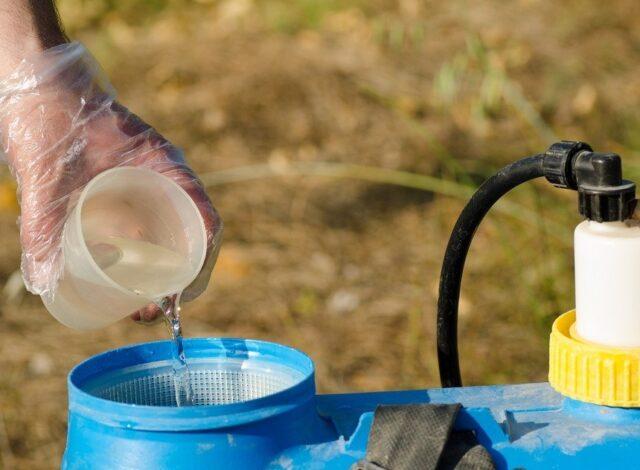
The grader is not recommended for use with fungicides and insecticides in the same tank mixture
Safety precautions and toxicity
The drug has a third hazard class.This means that the herbicide Grader, subject to the rules of use, is non-toxic to humans, warm-blooded animals, earthworms, and soil microorganisms.
When using the drug, it is necessary to limit the number of bees for 3-4 hours. It is prohibited to use the product closer than 2 km from the apiary.
When working with herbicide, you must follow personal safety rules. Before preparing the working fluid and processing, you must wear gloves, safety glasses, and a mask. Contact of the solution with the skin and mucous membranes may cause allergies.
Analogues
If necessary, this herbicide can be replaced with other drugs with a similar effect. But before using them for their intended purpose, you should carefully study the instructions.
Grader analogues:
- Squall. This herbicide has a systemic continuous effect. Its use is justified against annual, perennial cereal and broad-leaved weeds. Moreover, its destructive effect also extends to tree species. The active component of the herbicide is chisalofop-P-ethyl. Its concentration in the product is 125 g per 1 liter. The drug is effective at temperatures from +10 to +25 °C. Herbicide Shkval can be used before emergence and on growing weeds. The active component quickly penetrates the leaves, even if the plants are covered with a layer of dust.
Shkval is effective against difficult-to-eradicate and quarantine weeds
- Arsenal. A German herbicide whose active ingredient is imazapyr. The active substance content in the product is 250 g per 1 liter. The drug has a continuous effect. Arsenal is recommended for use in early spring during the beginning of the weed growing season or in the fall before the foliage turns yellow.Arsenal is active against annual, perennial cereal and broad-leaved plants, including woody species.
Arsenal does not have an unpleasant odor
- Arbonal. Continuous action herbicide. Helps clear the area of all types of herbaceous annuals, perennial weeds and trees and shrubs. Arbonal contains one active ingredient – imazapyr. The herbicide can be used to clean rapeseed and sunflower crops, as well as on non-agricultural lands. The protective effect lasts for 1-2 years.
It is acceptable to use Arbonal once per season
Conclusion
Herbicide Grader belongs to the category of drugs that can quickly and permanently get rid of unnecessary vegetation. However, it also has a detrimental effect on agricultural crops, except for varieties and hybrids of rapeseed and sunflower that are resistant to imazapyr. Therefore, you must strictly adhere to the rules of use.
Reviews from summer residents about the herbicide Grader
I use Geider herbicide to clean areas near roads and buildings. The drug gives a good result, as it completely destroys all vegetation. But it must be used carefully, as it remains active in the soil for several years.
This herbicide was used to remove vegetation between paving slabs and behind buildings. Gaider did an excellent job, and his protective effect remained for two years. The drug is easy to use and has no specific odor. You can use it at any time, since its effectiveness does not depend on air temperature.
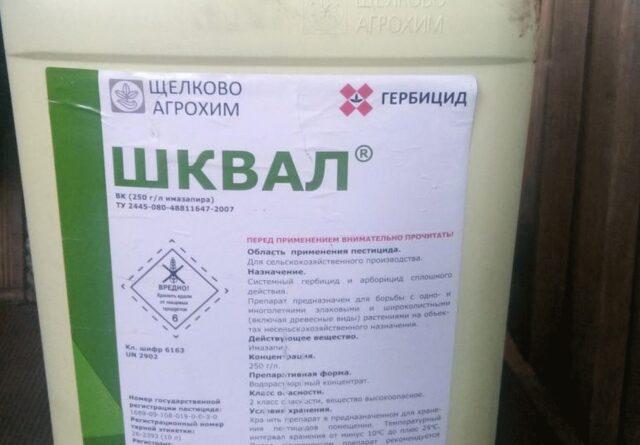
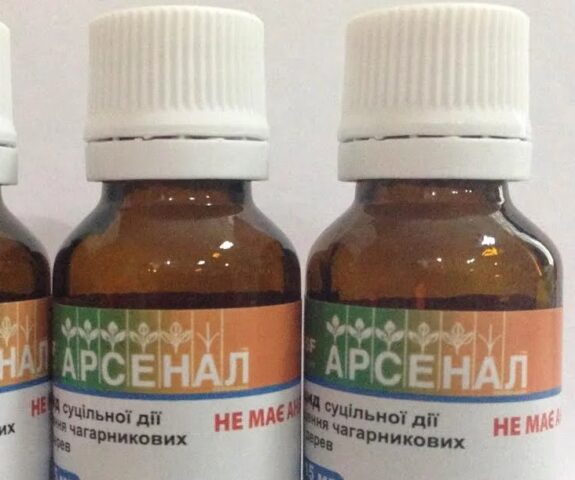
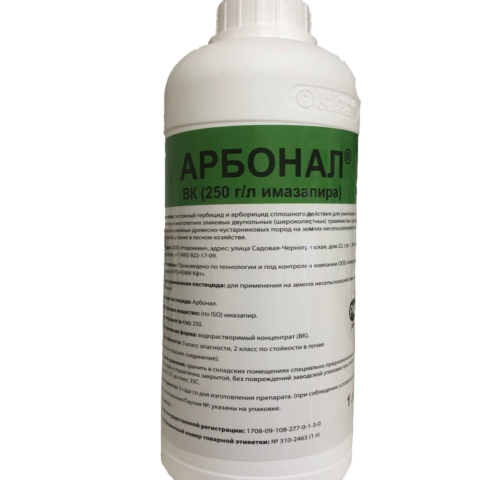
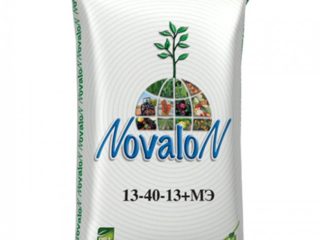
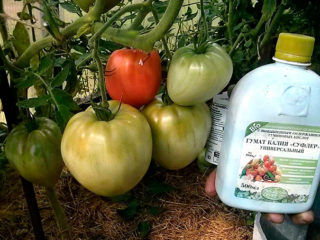
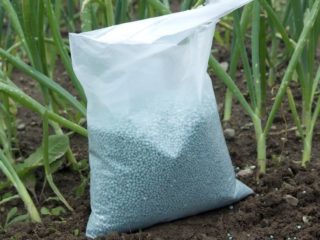
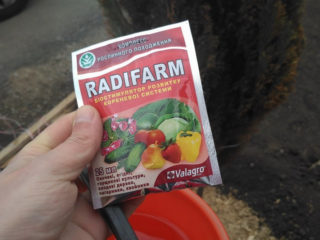
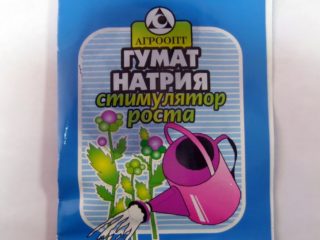
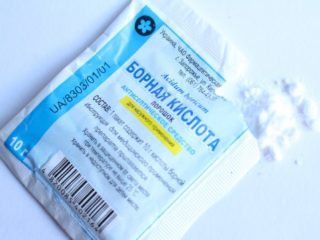
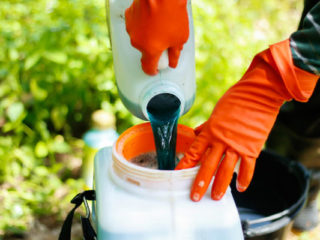
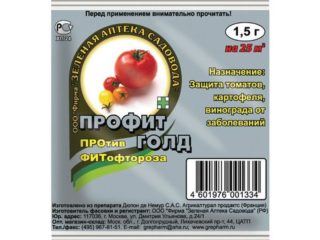
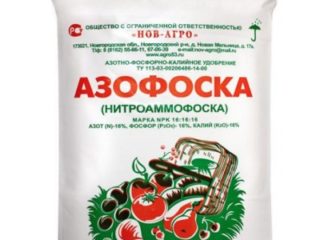
Hello, how many ml of the drug is needed for 10 liters of water?
Is it possible to use a grader in a garden along fences?
Good afternoon.
It depends on the type of fence and how close the special equipment will come to the fence. Of particular importance in this matter is the type, power, class, weight and other parameters of the grader, as well as the assigned task (leveling the soil, leveling and preparing for laying the roadway, clearing roads, etc.). This question should be addressed to a company that provides grading services or carries out work in the immediate vicinity of your site.